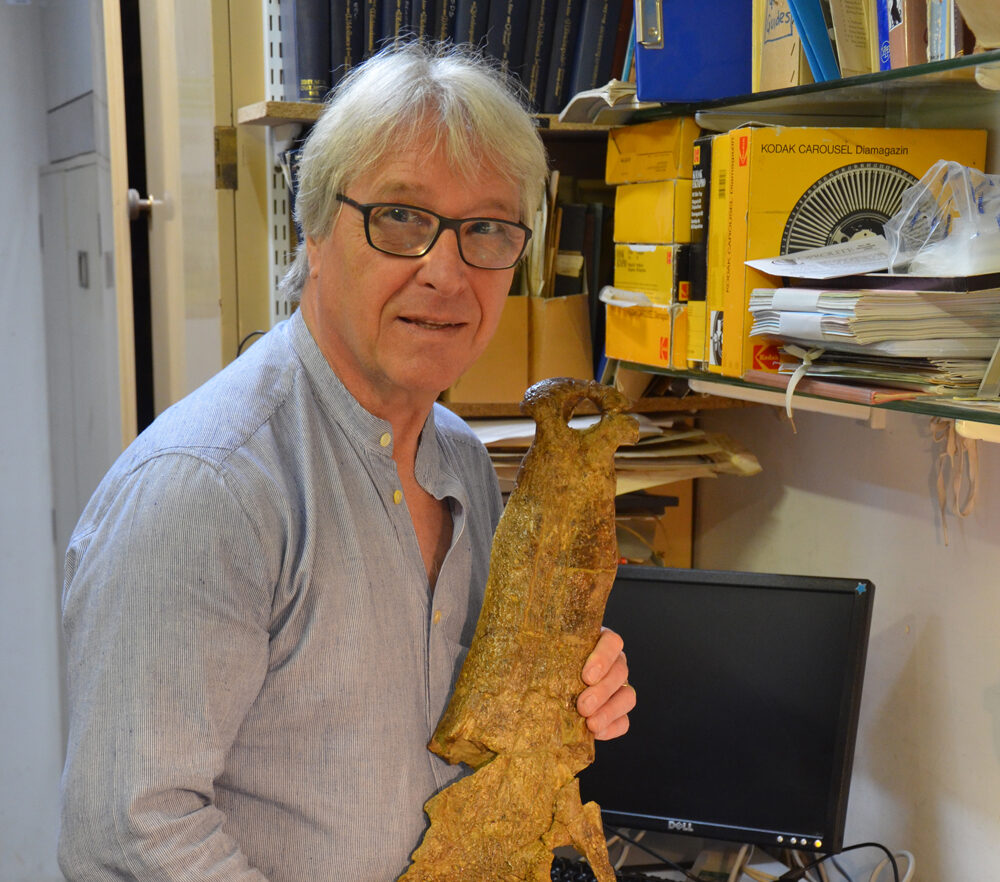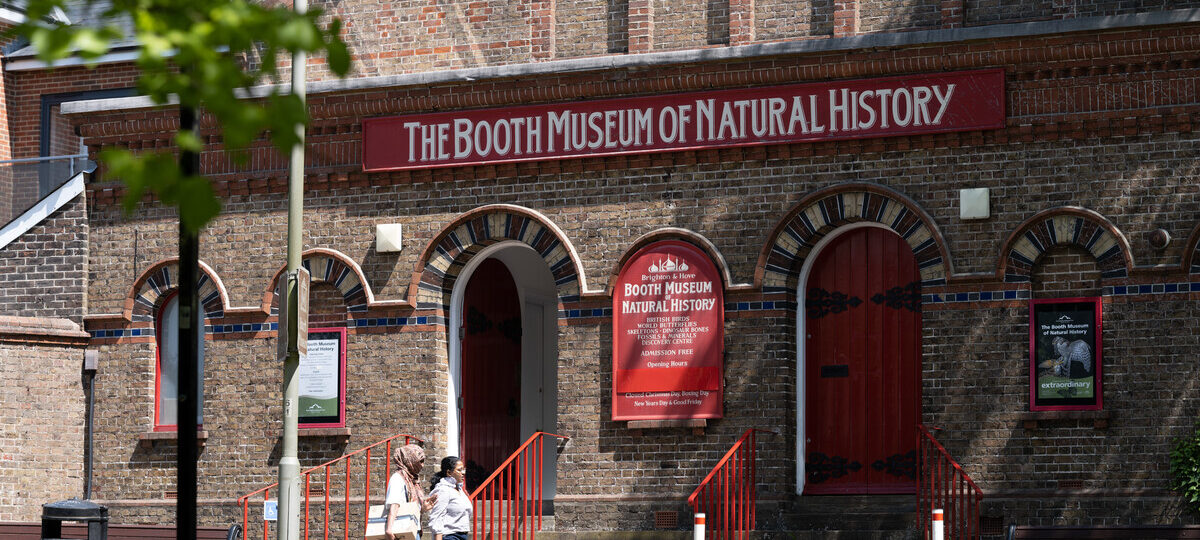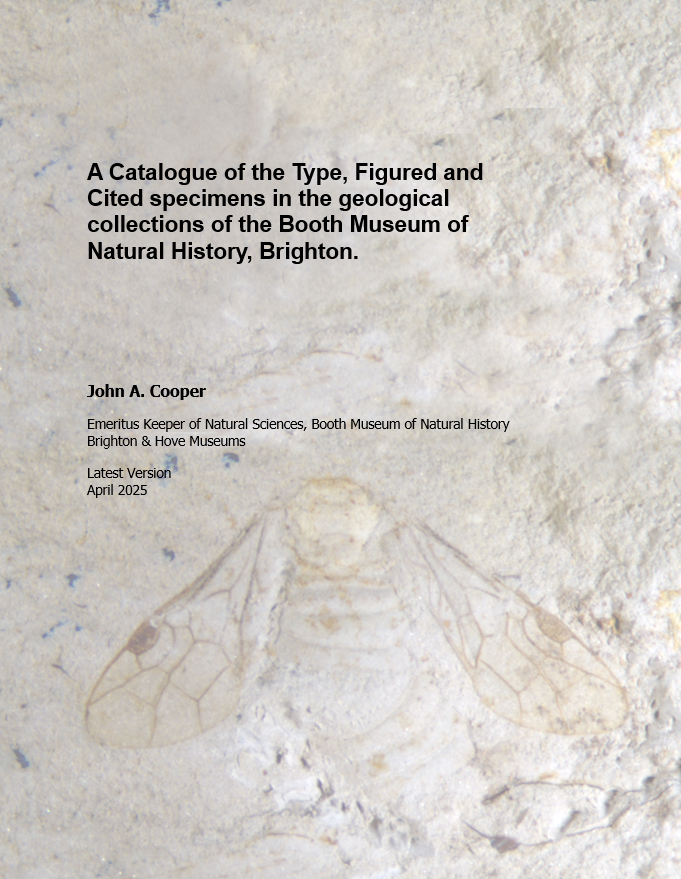Happy days for fossils at the Booth Museum

In May 2014 our now retired Keeper of Natural Sciences, John Cooper, wrote a blog post on his catalogue of Booth fossils and their national importance.
After publishing the most recently updated version, we revisit this earlier post to see why John continues this important task.
One of the jobs that a Keeper of Natural Sciences in a museum must do is look after the scientific interests of the collections for which he is responsible.
I have blogged several times about visits to the Booth Museum by British and international scientists who come to consult our collections. Since my specialty is the Earth Sciences, for me that means especially our marvellous fossil collections.
The collections most often used by researchers are the fossils from the Chalk – especially the fish but also reptiles, sea urchins and starfish. – fossil insects, plants and dinosaurs from the Weald, but many others too. Eventually these scientists publish the results of their work in scientific journals, and often this means them describing and illustrating specimens from the Booth’s collections.

For whatever reason, the specimens they publish take on a whole new level of importance within the science: in the future other scientists may want to re-examine and re-interpret the original research. So it becomes our responsibility to look after them very carefully.
One of the ways I do this is to publish the information about what we call the Type and Figured collection (type means that a specimen is THE chosen specimen to represent the new species, and figured means that it has been illustrated).
In the old days this meant actually publishing a catalogue of the specimens in a learned journal, or maybe even in a separate book. But now it is far better to publish on the internet; names of fossils can be searched for by anyone around the world very easily and uploading to the web is very simple (and cheap) compared to publishing the printed word.
I have just finished updating my online catalogue by adding the details of specimens from the Booth that were used in a book called English Wealden fossils which, although not on everyone’s Christmas list is of great significance to palaeontologists. The catalogue itself doesn’t make exciting reading, though I hope that those with an interest in museums, history and science might like the introductory parts.
I started gathering information about Type & Figured specimens not long after I started work at the Museum in 1981 and my initial list has continued to grow. The earliest publication which featured specimens now in the Booth Museum is a book by Frederick Dixon on Sussex Geology dated 1850!
There are now some 470 specimens in the catalogue. This represents an extraordinary richness of collections giving the Booth Museum a high ranking in the world of natural history museums.
It is one of the reasons why the Museum was awarded its Designated status by the Museums & Galleries Commission in 1997, an accolade meaning that ALL our collections are officially recognised to be of national importance.
